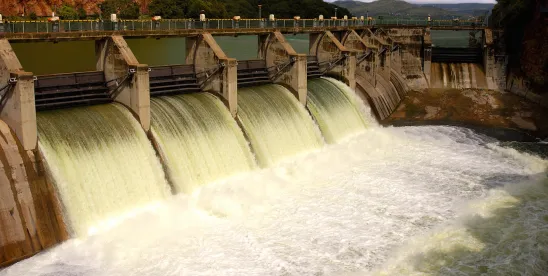Under the Clean Water Act (“CWA”), the EPA issues permits limiting the pollutants that regulated entities can discharge into federal waters. Those permits generally operate either by establishing effluent limitations for certain pollutants or by imposing narrative requirements, like requiring the permittee to use “best practices” to limit pollution. But in recent years, the EPA has sometimes taken a third approach, issuing results-oriented permits that impose penalties on the permittee if the water quality in the discharge area falls short of a certain level. In City and County of San Francisco v. EPA (No. 23-753), a 5-4 Supreme Court majority agreed with the City of San Francisco that these “end-result” provision exceed the EPA’s authority.
We’ll begin with a short primer on the EPA’s permit authority under the CWA. A core component of the CWA is the “National Pollutant Discharge Elimination System,” a regulatory scheme that makes it illegal for regulated entities to discharge permits into covered bodies of water unless authorized by a permit. Historically, the EPA permits imposed two basic types of restrictions. The first, “effluent limitations,” restricted the discharge of prohibited “quantities, rates, and concentrations” of pollutants. The second approach was the use of “narrative” requirements, which can be promulgated either in addition to or in place of effluent limits. These narrative limits can take various forms, with the most common one being the requirement that a permittee follow “best practices” to limit pollution. Failure to comply with these permit limitations can expose permittees to civil penalties or even criminal prosecution. But under the so-called permit shield provision, an entity that adheres to the terms of its permit is deemed to be compliant with the CWA.
The present case involves Oceanside, a water treatment facility operated by the City of San Francisco that, as its names suggests, discharges water into the Pacific Ocean. During heavy rains, the facility can become overwhelmed, leading to the release of untreated sewage. In 2019, when the EPA renewed Oceanside’s permit, it added two so-called end-result requirements to its permit, which prohibit it from “contribut[ing] to a violation of any applicable water quality standard” or “creat[ing] pollution, contamination, or nuisance,” as defined under California law. Oceanside challenged these permit conditions before the EPA’s Environmental Appeals Board. When that challenge failed, it petitioned for review in the Ninth Circuit. But the Ninth Circuit rejected San Francisco’s challenge to the end-result requirements of the permit, reasoning that the CWA grants the EPA authority to impose “any” limitations necessary to ensure water quality standards, including the end-result provisions in question. See 33 U.S.C § 1311(b)(1)(C) (“In order to carry out the objective of this chapter there shall be achieved . . . any more stringent limitation, including those necessary to meet water quality standards, treatment standards, or schedules of compliance, established pursuant to any State law or regulations [] or any other Federal law or regulation, or required to implement any applicable water quality standard established pursuant to this chapter.”). One judge dissented, and the Supreme Court granted certiorari to review whether the CWA allows the EPA to impose such end-result requirements.
Based on the text, history, and structure of the CWA, the Supreme Court reversed the Ninth Circuit and held that the EPA lacks statutory authority to impose end-result requirements. Writing for a majority of five (his fellow conservatives except Justice Barrett), Justice Alito first addressed San Francisco’s argument that the only permit “limitations” authorized by Section 1311(b)(1)(C) are effluent limitations. He concluded that the statutory text “doom[ed]” that argument: While Sections 1311(b)(1)(A) and (B) referred to “effluent limitations,” the very next provision, Section 1311(b)(1)(C), discussed the EPA’s authority to issue “any more stringent limitations” that are “necessary to meet” or “required to implement” water quality standards. The absence of the term “effluent” from Section 1311(b)(1)(C) must be treated as significant, showing that Congress authorized the EPA to issue limitations beyond simply effluent limits.
Justice Alito then turned to San Francisco’s narrower argument: that Section 1311(b)(1)(C) does not authorize EPA to impose permit requirements that condition a permitholder’s compliance on whether the receiving waters meet applicable water quality standards. And on that score, he concluded that the text, structure, and context of the CWA supported the City. He started with the text, pointing out that Section 1311(b)(1)C) only authorizes the EPA to issue “limitations,” a word that naturally suggests some external restriction what a permittee can do rather than an end result it must achieve. Statutory history supported this narrower reading. Congress enacted the CWA in 1972 to overhaul prior federal attempts to protect water quality, which had focused primarily on achieving certain end results by holding polluters legally responsible for substandard water quality in the area of discharge. But the CWA replaced that ex post regime with a permitting scheme—the National Pollutant Discharge Elimination System—designed to regulate polluters ex ante. Because Congress sought to protect water quality by means of “direct restrictions” on polluters rather than a backward-looking nuisance regime, Alito rejected the EPA’s argument that it could still include such provisions in permits.
Justice Alito also found support for his reading of Section 1311(b)(1)(C) in the general statutory scheme. Because the statute imposes strict liability for permit violations, Alito thought it made sense that permits should provide regulated parties with clear, advanced notice of the steps they must take to find safe harbor. As he noted, subtle changes in water quality can take months to detect, while the penalties for violations can accrue at a rate of up to $25,000 per day. Under the EPA’s theory, an entity could face such retrospective liability based on discharges by another polluter in the vicinity entirely beyond its control. Alito also rejected the EPA’s argument that end-result permits were the best way for to protect water quality. As he observed, the EPA has the expertise to advise permittees up front what they need to do to maintain appropriate standards and has both permitting and emergency powers to force reticent entities into compliance. The Court therefore held that the CWA does not authorize the EPA to include end-result provisions in permits.
Justice Barrett dissented, joined by Justices Sotomayor, Kagan, and Jackson. They agreed with the majority’s rejection of San Francisco’s sweeping statutory argument that Section 1311 only authorizes effluent limitations, implicitly precluding narrative requirements. But the dissenters would take that recognition a step further, holding that the phrase “any more stringent limitation” in Section 1311(b)(1)(C) properly encompasses “requirements defining the permissible discharge by reference to its effect on the quality of the waters that receive it, rather than by reference to the nature of the discharge itself.” Barrett thought this backstop was particularly necessary for cases like this one, where effluent limitations had proven insufficient to prevent “serious breaches of the water quality standards, such as ‘discoloration, scum, and floating material, including toilet paper, in Mission Creek.’”
The dissenters were unpersuaded by the majority’s textual argument that the EPA could impose only external limitations on entities, rather than limiting the entity to a plan of its own making that was required to achieve specified water quality standards. As Barrett observed, the word “[l]imitation” can be general as well as specific. Barrett was similarly unimpressed by the majority’s historical argument. In her view, Congress had not scrapped consideration of water quality end-results altogether; it simply added the front-end vehicle of effluent limitations to address most of those concerns, leaving Section 1311(b)(1)(C) to address “any residual risk that discharges will violate the water quality standards.” Finally, Barrett was unmoved by the majority’s structural analysis: If an entity objected to lack of adequate notice based on a particularly vague or unreasonable end-result requirements, it could challenge that specific end-result requirement as arbitrary and capricious under the Administrative Procedure Act. Such challenges were also the appropriate vehicle to address concerns about multiple contributing polluters. Finally, Barrett expressed concern that the majority’s approach would deprive the EPA of a valuable enforcement tool, causing delay or denial of permits and adversely impacting regulated entities.





 />i
/>i
